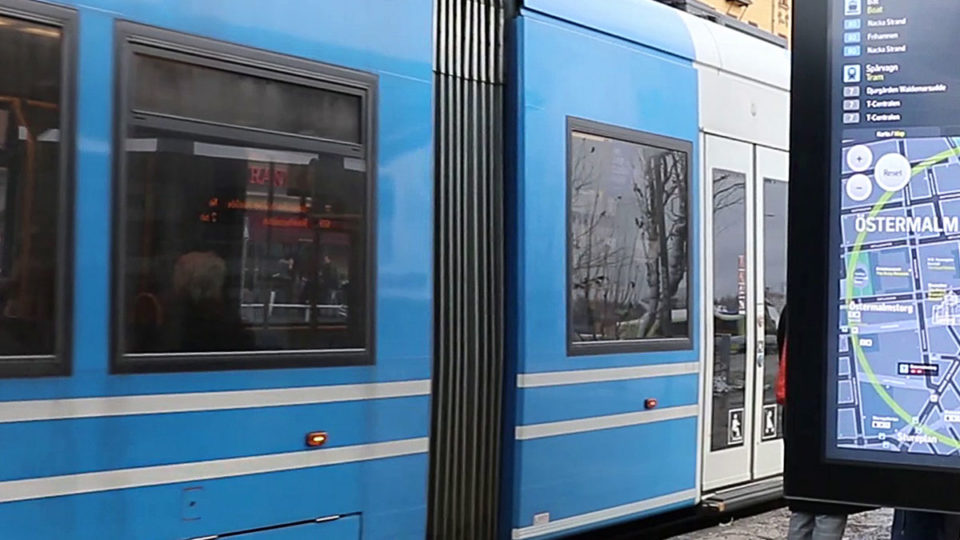
Future proofing passenger information management systems
The world is more connected than ever before – communication channels have become a key piece that needs development alongside infrastructure modernization. Better means of communication opens transit agencies to new revenue streams and better relationships with their ridership – but before these can be achieved, the passenger information systems need to be brought to a level that resonates with the needs of modern passengers and of regulatory ADA (Americans with Disabilities Act) requirements tied to governmental funding.
Open architecture, security and ultra-scalability as fundamentals
Modern riders want real-time accurate information, and they expect it to be delivered in an engaging way. For many transit agencies this will require new ways of leveraging existing technologies, as well as modern passenger information displays that are able to deliver vivid audio-visual experiences that meet needs of not only ridership, but also cater to advertisers and meet the demands of governmental regulations.
Most passenger information systems in use today consist of siloed and separate systems that lack the technical capabilities to provide for example, real-time vehicle location information. They are also often unable to adapt to unplanned events, interruptions and crisis situations. Modern passenger information systems are now capable of not only adapting to abrupt changes, but they are also capable of providing proactive information, including recommendations for alternate routes during disruptions and critical safety related information during a health crisis.
Older systems also lack capabilities to deliver on modern accessibility requirements, which are now heavily tied in with governmental funding. In most states across the United States, ADA regulations nowadays include mandated requirements to getting funding. Passenger information displays play a pivotal role in this, as they can help modernize the passenger experience in a way that meets current ADA regulations. Text-to-speech is a good example of the features that are now mandated when upgrading to newer display systems. Modern information displays can be equipped with software that vocalizes the text on the screen with a simple button press.
Breaking out of closed architectures
The ways we communicate evolve rapidly, so it is no longer wise to get heavily locked into technologies with closed architectures and instead opt for open architectures that enable adding new technologies that interface with the old or add enhancements to them.
Many transit agencies are bogged down by legacy hardware and closed systems with technologies that can be 20+ years old. A full overhaul from the ground up is often not a financially viable option, so it is vital to leverage existing systems, when possible, to provide a path to gradually deploy a smart and integrated system that provides modern riders with the level of experience they expect. Modern PIS solutions can aggregate and integrate data from existing legacy systems, which can then be leveraged in many ways to provide better service to the ridership. Even simple integrations such as offering passengers locally relevant real-time information on platforms and on-board vehicle information displays can provide passengers with a feeling of connectedness that legacy systems cannot.
Additional lanes of revenue
For many agencies, restoring and increasing ridership alone is not enough to solve all funding problems. Modern passenger information systems can help provide extra streams of revenue that can not only offset the investment costs but also help with operational costs. This can be achieved by upgrading the passenger information system to have the technical capabilities to drive advertising and technology collaborations with companies, such as wireless and cellular providers. Information displays can have dedicated segments for 3rd party advertising. As an example, LA Metro has partnered up with companies to develop their transit system mobile app. This came at no charge to the agency and the developer makes revenue from app advertising. These kinds of partnerships are a realistic way for transit agencies to adapt to the evolving future. It is important to keep in mind that data that transit agencies can collect is increasingly valuable for advertisers, agencies, city planning departments and others
Building towards smarter cities
Smart Cities are ultimately the big picture goal for most major cities. This will require that city planning includes a smart transit model, which can collect data from all agencies including Roads/Highways, Mass Transit (Buses, Trains, Para), Regional Rail, Ports/Ferries, Airports, and City Operations, as well as Police, Fire, and Rescue departments. Bringing all this data together requires a system that works as a conduit between the old and the new. That’s where our solutions come in. Teleste’s passenger information management system architecture is a secure, ultra-scalable solution that is ready to evolve and propel alongside future smart cities!
Read more about Teleste’s passenger information management system here.
Mike O’Dea
Mike O’Dea
I am heading Teleste’s Video Security and Information Solutions business activities in North America. Having been involved with safety and security planning for numerous large U.S. cities as a trusted advisor on technology investments, I am also a regular presenter regarding the benefits of “Safe and Secure Communities” and topics associated with Video-based Solutions and PSIM. See my LinkedIn for more information.



